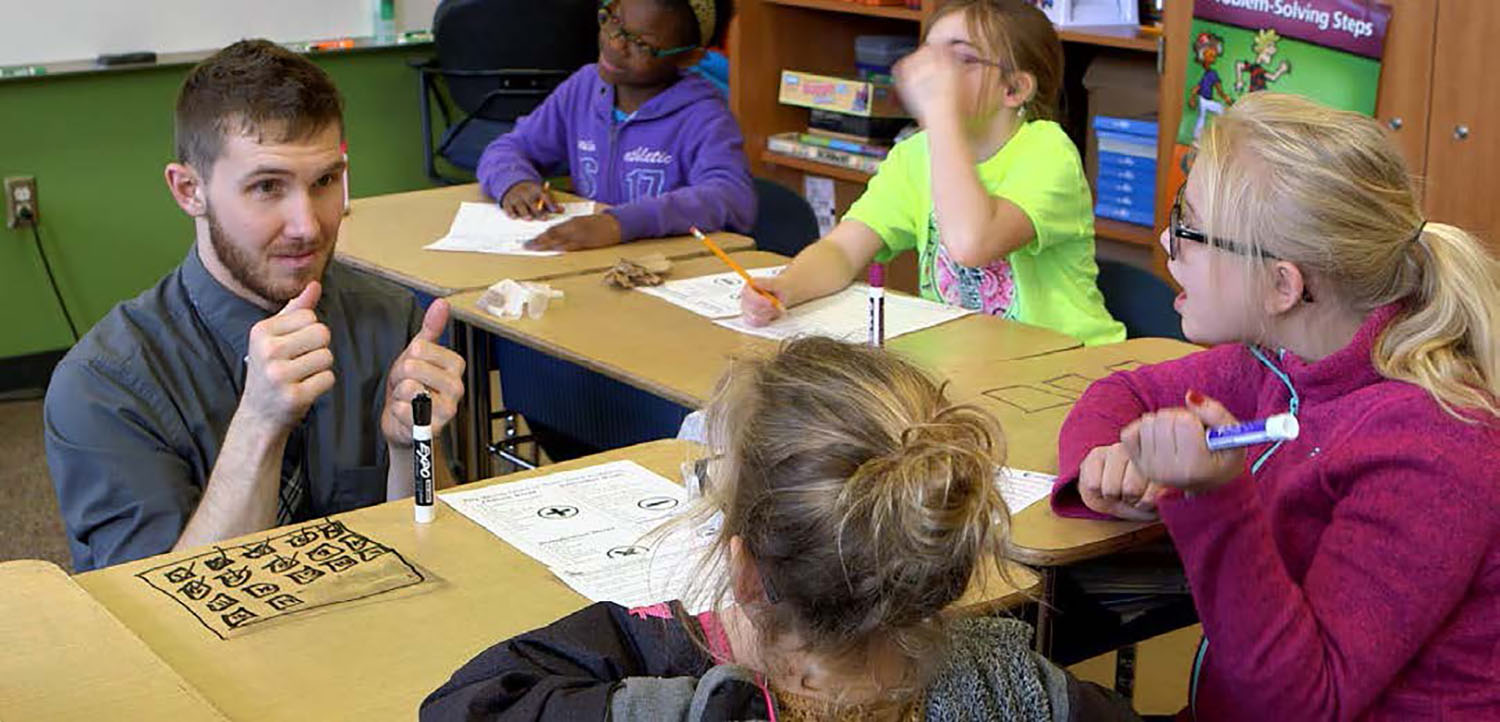Educational Service Guidelines for the Students who are Deaf and Hard of Hearing
Section 3: Instruction and Learning

Outcome: Students who are D/HH thrive and achieve their full academic potential in linguistically rich educational environments where language, communication, academics, and social opportunities are fully accessible.
Ohio's learning standards and/or extended standards apply to all students with disabilities. Through the use of current early intervention program standards, district adopted curriculum materials and resources, and teacher designed materials, programs and schools support the teaching of these standards. The primary focus of instruction is the learning/performance standard and the ongoing assessment of student learning. By aligning curriculum, assessment and communication needs, intervention specialists and educators determine effective and appropriate methods of instruction for students who are D/HH.
School districts must show yearly progress for all students, including those students receiving special education services. Districts are required to annually measure and publicly report the progress of students in each school and at the district level regarding progress towards the statewide performance targets on statewide assessments and district level assessments. For infants and toddlers with an IFSP, growth is measured by demonstrating appropriate developmental progress.
Students who are D/HH, birth through 21 years, including those with multiple disabilities or deafblindness, are instructed using the early intervention and district curriculums that are aligned with Ohio State Standards. The program of instruction considers the central role that language and communication play as they relate to cognitive, academic, and social-emotional development.
The Communication Plan (Appendix B) defines the communication approach that the family, along with the IFSP/ IEP/504 Plan team, has determined meets each student's unique needs. When this document is used in the child's IEP, it should be included in the IFSP/IEP/504 Plans for students who are D/HH.
Areas addressed in the Communication Plan for infants and toddlers include:
- Information provided to family regarding hearing loss and communication options
- Language development opportunities, communication modes, and intervention program options
- Identification of the student's primary communication mode in both formal learning settings and informal social settings.
- Opportunities for direct communication in the student's communication mode with peers and adults who are D/HH
- Information on communication choices, types and differences of learning environments (placements) and accommodations and modifications
- Opportunities for intervention services from professionals who have demonstrated proficiencies in providing early intervention services to students who are D/HH and who can directly communicate with the students in a manner consistent with the student's developmental level and communication mode
- Environments where early intervention services are provided that offer active and consistent communication designed to develop basic interpersonal communication skills in the modality used by the student
Areas addressed in the Communication Plan for preschool and school-age students include the:
- Student's primary receptive and expressive language and primary communication mode
- Availability of adult role models and peer groups who are D/HH who use the student's communication mode or language
- Explanation of all educational options provided by the school administrative unit and available for the student
- Licensed teachers, interpreters, and other specialists responsible for delivering the Communication Plan in the student's identified primary mode of communication or language
- Identification of communication accessible academic instruction, school services, and extracurricular activities that the child/student will receive
- Hearing assistive technology (HAT) or other assistive technology required by the student
Note: The Communication Plan is not a checklist, but rather a tool to promote meaningful discussions of each component, resulting in any necessary action plans to address relevant needs. The team must also ensure that there is meaningful correlation between the Communication Plan, the student's IEP goals, and how the student functions in his/her educational environment. The result of this meaningful and thoughtful discussion about the student and his/her communication needs, social and instructional needs will be documented and utilized in determining the student's current performance levels as well as other components of the IEP, including appropriate specially designed instruction and IEP goals, and will, as appropriate, result in any necessary “action plan” to address student's needs.
Professionals and parents form a multidisciplinary team during early intervention, the school years, and transition into adult life. The team works collaboratively, providing meaningful opportunities to engage students in linguistically rich, rigorous standards-based curriculums and provides accommodations to maximize the student's ability to demonstrate what s/he knows and can do. These team members actively plan and execute the many transitions that occur for students who are D/HH.
In addition to program, district, and state core standards, direct instruction to students who are D/HH frequently utilizes specialized curricula and language systems (i.e. visual phonics, cued speech). These curricula (often teacher created) help students who are D/HH acquire skills in areas specifically impacted by hearing loss. These curriculums focus on the development of communication, language, literacy, and transition skills. Each curriculum should contain content and performance standards that are integrated into Ohio's Learning Standards.
Federal and state legislation mandate that students with IEPs must participate in state and district assessments. Assessments are a mean to measure student achievement, obtain data for program accountability, and design effective instruction. In Ohio, students who are D/HH are assessed through the general state assessment with appropriate accommodations as outlined in their IEP/504 Plan. All school-age students who are D/HH, except those taking the alternate assessment, must be measured against the same age or grade-level content standards in development, reading, math, social studies and science as their typical peers. The alternate assessment must address the same content standards but at a different performance level. Students are given ongoing formal and informal assessments to examine other developmental domains. Progress is measured by performance-based, criterion-referenced, and norm-referenced assessments.